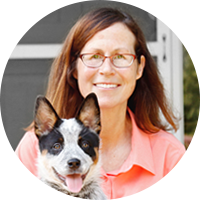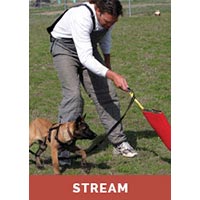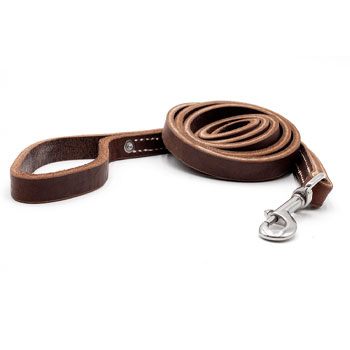August 02, 2023
I have been watching your videos and working on tug with my adopted shepherd mix. I'm having trouble getting play with my dog, I've watched the videos over and over and I think my presentations are good. Do you have any ideas?
Full Question:
I am watching your tug videos. Michael Ellis says that letting your dog carry and keep the toy will build possessiveness. Mark Keating seems to say the opposite. I have a 3.5 year old shepherd mix we adopted. He seems mostly motivated to take whatever toy we tug with to keep and chew. If I give him wins, he keeps walking away and when I bring him back, he gradually loses interest. The other day I thought I would try just tugging and outing, never giving the tug to him completely. Now he seems to have decided that the tug must be mine, and he won't even bite it. I have switched to other items, but the pattern seems to be repeating itself. I want to make sure with the next toy I don't make the same mistakes. I have been watching Michael's videos over and over and I think my energy and presentations are pretty good. Any ideas? 
 Cindy's Answer:
Cindy's Answer:
How long have you had your dog? what kind of toy are you using?
For a dog that's new to tugging or is not extremely committed we like to use a very soft toy that the dog REALLY wants to possess. We don't let them carry the toy away, even if we give it to them. The dog should be on a leash.
For a dog that's new to tugging or is not extremely committed we like to use a very soft toy that the dog REALLY wants to possess. We don't let them carry the toy away, even if we give it to them. The dog should be on a leash.
User Response:
Hi Cindy-Thanks for getting back to me. We have had the dog for almost a year and a half. I was using a firm canvas 12" tug, then I switched to a soft sheepskin tug (which squeaks, though he has never shown an aversion to that). I tried putting him on a leash, he but he seemed confused. He is very leash aware (we have been doing a lot of loose leash work, stopping and restarting) and when I lightly pulled him back with the leash (just two finger pressure) he dropped the tug and then wouldn't re-engage with it.

 Cindy's Answer:
Cindy's Answer:
I think for your dog I would switch to a harness and do some of the exercises we do for puppies learning foundation for tug play and bite work foundations. I'd definitely find a toy that he LOVES and since he isn't all that committed to the activity right now I might encourage possession so he feels empowered.
I like to have a friend hold my dog on a harness and first I get them comfortable pulling into it for a high value reward. You want the dog to be 100% comfortable in the harness and to know it's OK to pull into it. No obedience is required when wearing it.
This may take 5 minutes or it may take multiple sessions, depending on the dog. Then hold the dog back and tease him with the toy and when he is into it, let him grab it. Put the toy on a line so he can keep it but you can yank it away and start the game again if he drops it. If he likes holding the toy, have the person holding the leash run him in a circle and encourage him to re-engage with you with the toy.
Here are some videos on the beginning steps of using the harness. It's geared towards puppies but the steps are the same for an adult dog. I'm sure there are more on our website but these are what I found right away.
https://leerburg.com/flix/player.php/1906/Michael_Ellis_on_Using_Restraint_to_Help_Build_Motivation_in_Puppy_Training
https://leerburg.com/flix/player.php/1905/Michael_Ellis_on_Training_Your_Puppy_to_Come_Using_a_Harness
Here's a clip of me with one of my dogs playing with Michael, so you can see what you would like it to look like when the dog is comfortable in the harness and knows the game is to run in a circle and go back to play again.
https://leerburg.com/flix/player.php/1826/Michael_Ellis_on_Using_Auditory_Stimulation_in_Dog_Training
I like to have a friend hold my dog on a harness and first I get them comfortable pulling into it for a high value reward. You want the dog to be 100% comfortable in the harness and to know it's OK to pull into it. No obedience is required when wearing it.
This may take 5 minutes or it may take multiple sessions, depending on the dog. Then hold the dog back and tease him with the toy and when he is into it, let him grab it. Put the toy on a line so he can keep it but you can yank it away and start the game again if he drops it. If he likes holding the toy, have the person holding the leash run him in a circle and encourage him to re-engage with you with the toy.
Here are some videos on the beginning steps of using the harness. It's geared towards puppies but the steps are the same for an adult dog. I'm sure there are more on our website but these are what I found right away.
https://leerburg.com/flix/player.php/1906/Michael_Ellis_on_Using_Restraint_to_Help_Build_Motivation_in_Puppy_Training
https://leerburg.com/flix/player.php/1905/Michael_Ellis_on_Training_Your_Puppy_to_Come_Using_a_Harness
Here's a clip of me with one of my dogs playing with Michael, so you can see what you would like it to look like when the dog is comfortable in the harness and knows the game is to run in a circle and go back to play again.
https://leerburg.com/flix/player.php/1826/Michael_Ellis_on_Using_Auditory_Stimulation_in_Dog_Training
User Response:
Those are some great ideas, I will give them a try! I did try a harness, but he was hesitant to pull, so it is good to know that it might take some time to get him comfortable with it. Then I could also use it for the restraint exercises in the recall video, which I am also working on with him. Thanks for your help.

 Cindy's Answer:
Cindy's Answer:
you bet! Keep me posted on your progress :)
User Response:
Hi Cindy,I ordered the harness and the furry tug. In the meantime, I have continued to experiment and just see what he is interested in. Ryan's video on the fundamentals of tug with Whiskey and Mark Keating's introductory video showing the lower-drive shepherd were so far the most helpful. You and they helped me to identify that I have a dog that is lower drive, and perhaps Michael Ellis' framework works better for high drive dogs. For my dog, I have to stay interesting without overwhelming him so I think that means shorter tug events, more wins for him, a slightly mellower tugging rhythm, softer and smaller tugs, and letting him keep the tug but getting him to chase me with it if I can. Thanks again for your help. I think we are on the right path.

 Cindy's Answer:
Cindy's Answer:
that's great, I'm glad to hear this. Even with higher drive dogs, there are so many individual differences in play styles and preferences it's always a learning experience. I'm always happy to help.
100% (3 out of 3)
respondents found this answer helpful


Can't find what you're looking for?








